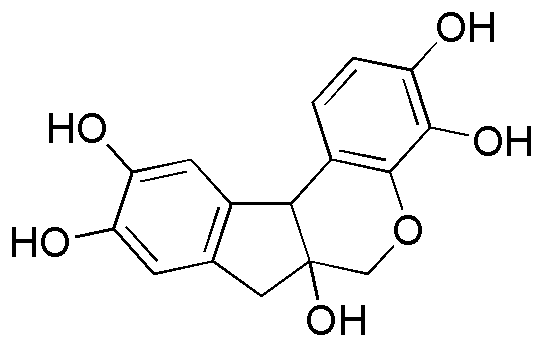Hematoxylin Certified is widely utilized in research focused on:
- Histology and Pathology: This compound is a key stain used in tissue samples to highlight cellular structures, making it invaluable for diagnosing diseases and studying tissue morphology.
- Microscopy: Hematoxylin is often paired with eosin to create contrast in microscopic slides, enhancing visibility of cellular details for researchers and medical professionals.
- Forensic Science: In forensic investigations, hematoxylin aids in the examination of biological samples, helping to identify cellular components in crime scene analysis.
- Pharmaceutical Research: It is used in drug formulation studies to assess the effects of compounds on cellular structures, providing insights into drug efficacy and safety.
- Education and Training: Hematoxylin is commonly used in educational laboratories to teach students about histological techniques and the importance of staining in biological research.
General Information
Properties
Safety and Regulations
Applications
Hematoxylin Certified is widely utilized in research focused on:
- Histology and Pathology: This compound is a key stain used in tissue samples to highlight cellular structures, making it invaluable for diagnosing diseases and studying tissue morphology.
- Microscopy: Hematoxylin is often paired with eosin to create contrast in microscopic slides, enhancing visibility of cellular details for researchers and medical professionals.
- Forensic Science: In forensic investigations, hematoxylin aids in the examination of biological samples, helping to identify cellular components in crime scene analysis.
- Pharmaceutical Research: It is used in drug formulation studies to assess the effects of compounds on cellular structures, providing insights into drug efficacy and safety.
- Education and Training: Hematoxylin is commonly used in educational laboratories to teach students about histological techniques and the importance of staining in biological research.
Documents
Safety Data Sheets (SDS)
The SDS provides comprehensive safety information on handling, storage, and disposal of the product.
Product Specification (PS)
The PS provides a comprehensive breakdown of the product’s properties, including chemical composition, physical state, purity, and storage requirements. It also details acceptable quality ranges and the product's intended applications.
Certificates of Analysis (COA)
Search for Certificates of Analysis (COA) by entering the products Lot Number. Lot and Batch Numbers can be found on a product’s label following the words ‘Lot’ or ‘Batch’.
Numéro de catalogue
Numéro de lot/série
Certificates Of Origin (COO)
This COO confirms the country where the product was manufactured, and also details the materials and components used in it and whether it is derived from natural, synthetic, or other specific sources. This certificate may be required for customs, trade, and regulatory compliance.
Numéro de catalogue
Numéro de lot/série
Safety Data Sheets (SDS)
The SDS provides comprehensive safety information on handling, storage, and disposal of the product.
DownloadProduct Specification (PS)
The PS provides a comprehensive breakdown of the product’s properties, including chemical composition, physical state, purity, and storage requirements. It also details acceptable quality ranges and the product's intended applications.
DownloadCertificates of Analysis (COA)
Search for Certificates of Analysis (COA) by entering the products Lot Number. Lot and Batch Numbers can be found on a product’s label following the words ‘Lot’ or ‘Batch’.
Numéro de catalogue
Numéro de lot/série
Certificates Of Origin (COO)
This COO confirms the country where the product was manufactured, and also details the materials and components used in it and whether it is derived from natural, synthetic, or other specific sources. This certificate may be required for customs, trade, and regulatory compliance.


